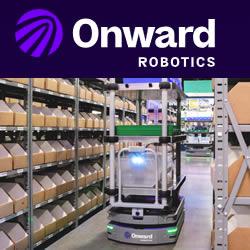US to sail submarine drones in South China Sea
Over 1,000 Student-Led Robotics Teams Converge At VEX Worlds
9 open source robotics projects
Shockingly, Robots Are Really Bad at Waiting Tables
SCHAFT Unveils Awesome New Bipedal Robot at Japan Conference
Toyota Expands AI, Robotics Research to Third Facility
Why Everyone Must Get Ready For 4th Industrial Revolution
Efficient 3D Object Segmentation from Densely Sampled Light Fields with Applications to 3D Reconstruction
National Robotics Week delights kids
Robotics makes baby steps toward solving Japan's child care shortage
Collaborative Robots Will Transform Logistics Says DHL Group
Cafe X Robotic Barista
Amazon Hosted A Secretive Robotics Conference In Florida
OpenROV Trident Pre-orders
America, Regulate Drones Now or Get Left Behind
Records 1141 to 1155 of 1671
First | Previous | Next | Last
Featured Product

Onward Robotics - Meet Me Fulfillment Automation
Robotics and Automation - Featured Company

